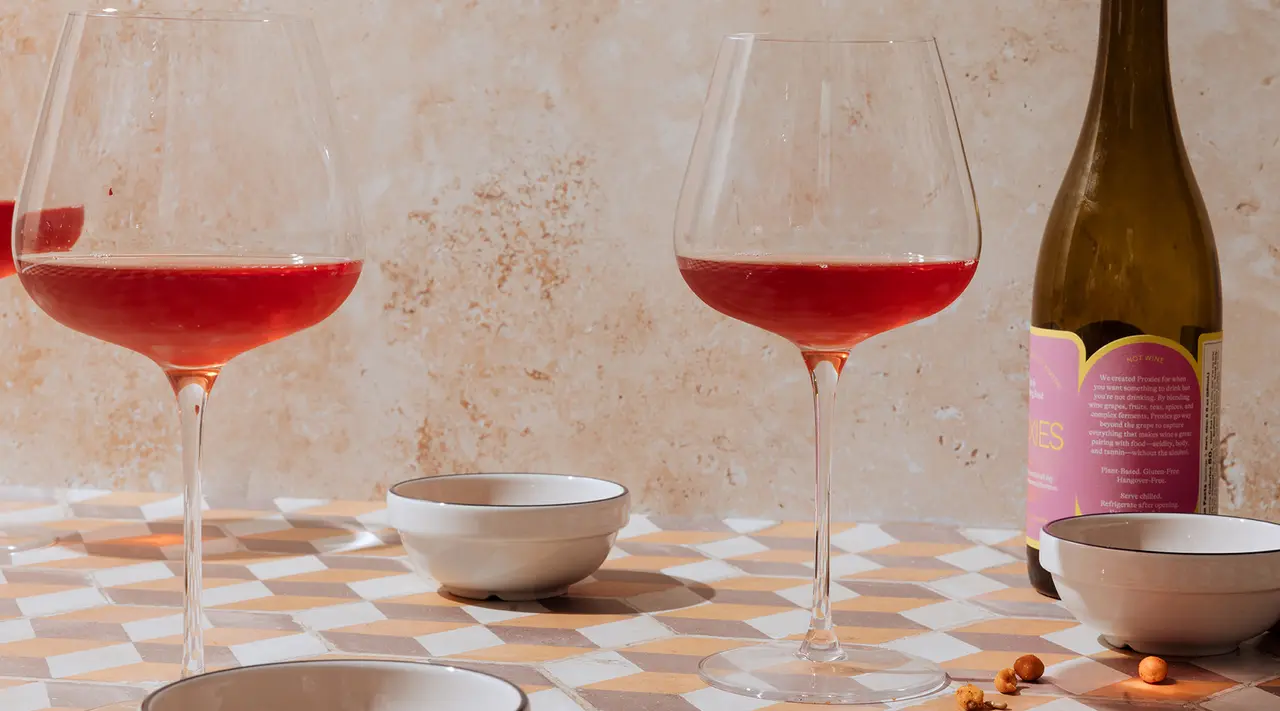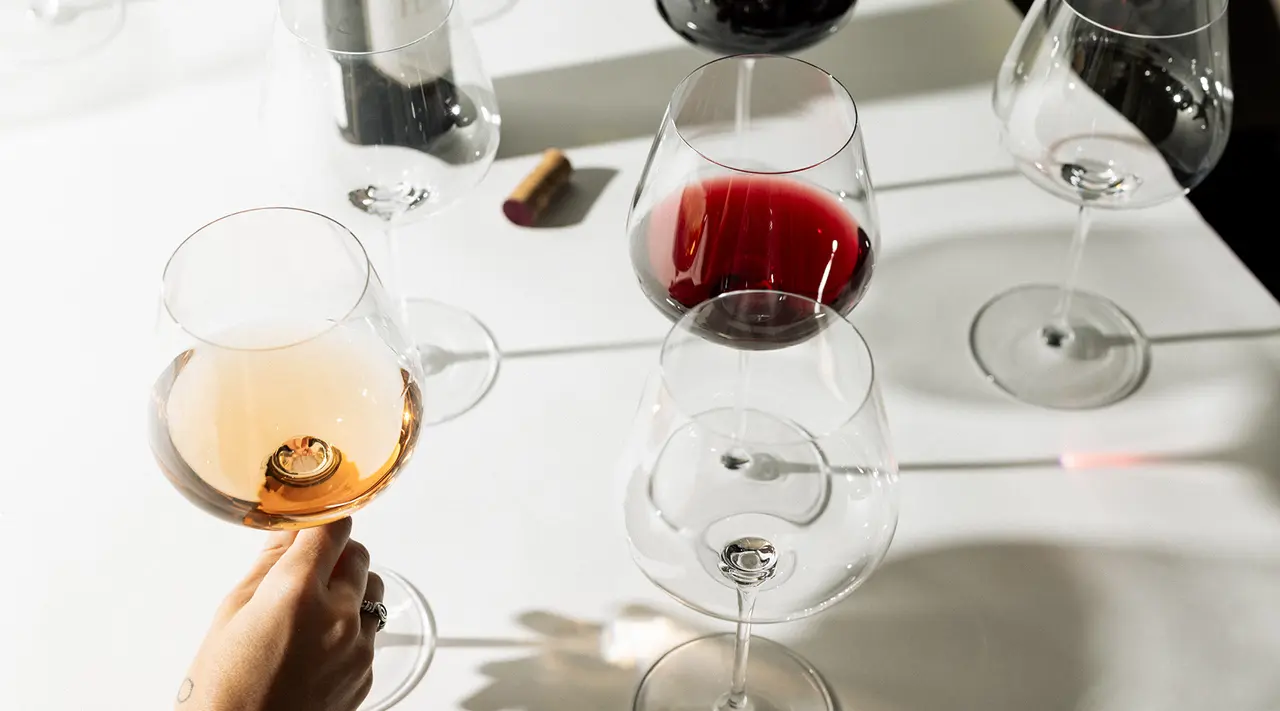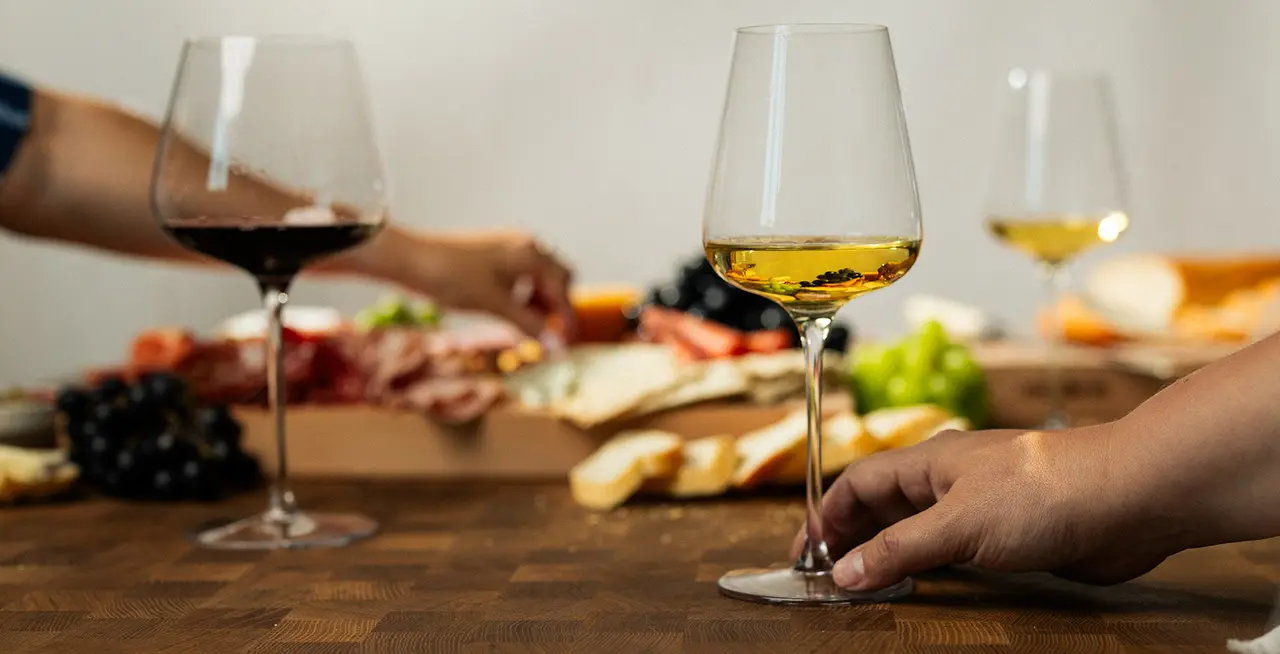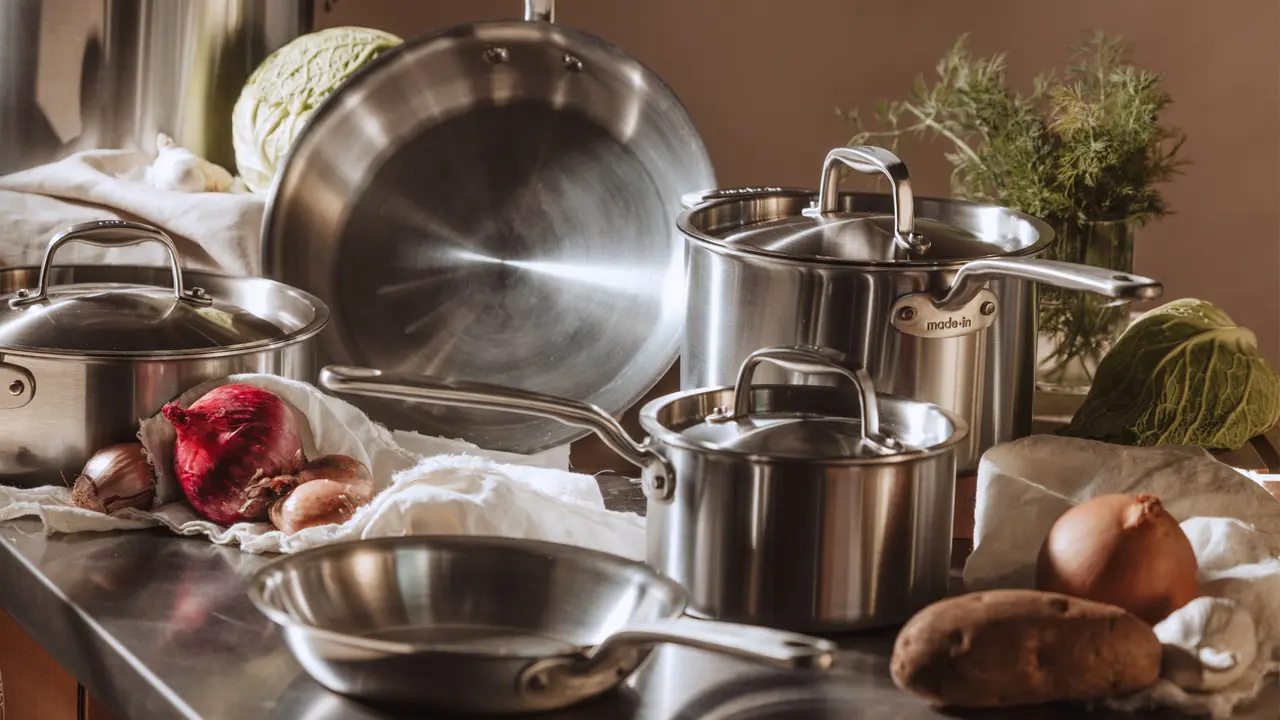When thinking about different wine glass shapes, it’s helpful to think about the unique characteristics of red and white wines. Broadly speaking, red wines need more aeration in order to let their flavors and aromas sing, so they’re best served in a glass with a larger bowl.
On the other hand, white wines don’t need as much aeration, and therefore don’t require quite as much room. They’re also both served at slightly different temperatures— red wines taste best when served just a bit below room temperature, whereas whites are usually chilled.
While a true oenophile might insist on using different glasses for Burgundy, Bordeaux, and Chardonnay, we think that two universal glasses—one for Red Wine and one for White Wine—is more than enough for everyday wine drinkers. Turns out the experts—like our friend and wine vet Alicia Towns Franken—agree: “There are over 400 different wine glasses branded for certain wines, but I love an all-purpose glass. [Made In’s] are absolutely perfect.” (Head behind the design to see how we make them.)
Below, we’re sharing a detailed guide to red wine glasses vs. white wine glasses, and how to shop for both of these styles like a sommelier.
What Is a Red Wine Glass?
“Red wines need more air, which is why they have a larger bowl,” explains Alicia. “You’re able to capture the aromas.” The larger capacity of a red wine glass gives you more room for swirling—and thereby oxygenating the wine—as well as for appreciating the range of colors and textures present in different types of red wines.
Wines that particularly benefit from a larger glass are ones that are high in tannins (compounds that influence texture as well as bitterness and acidity), and therefore require plenty of oxygen to balance them out. Bordeaux, Cabernet, and Malbec are known for being especially tannic wines, which is why there are types of red wine glasses specifically for these types of wines.
That said, a universal or all-purpose red wine glass (one that works for even the most full-bodied reds) can save you cabinet space and make choosing your glassware simple. “If you only want or can fit one [type of wine glass], get red and use them for white wine as well,” suggests Alicia.
What Is a White Wine Glass?
Compared to bolder red wines, white wines tend to have subtler flavor profiles and aromas, as well as lighter bodies. Accordingly, they tend to taste best in smaller glasses, which create less distance between your nose and the wine and make those aromas easier to pick up on. The smaller surface area also helps the wine stay cold, and a slightly tapered shape guides the aromas—and then the wine—to your palate.
Like red wine glasses, there are a variety of silhouettes to go with various white wines, from the popular (Chardonnay) to the esoteric (Sauternes). However, a set of high-quality universal white wine glasses will be more affordable and just as effective for serving any kind of white wine. An all-purpose white wine glass also helps to open up the scents and flavors of effervescents like Champagne.
“I and many other wine professionals drink Champagne and sparkling wines out of all-purpose white wine glasses. Not as celebratory as flutes, but flutes are too confined. You see the bubbles, but you don't get the nose,” says Alicia. “As soon as you put it in a white wine glass, it opens up beautifully.”
Does the Shape of Wine Glasses Really Matter?

While you could technically enjoy wine from any kind of glass, the shape of wine glasses really does make a difference in how you experience a wine. Wines vary in terms of factors like body, tannin content, and alcohol content, all of which influence flavor and mouthfeel. The shape of a wine glass helps play up these traits, from the shape of the bowl to the distance between the base and the lip.
The Lip
An often-understated factor of wine glass shape that can impact your drinking experience, as well as the flavor of the wine, is the thickness of the rim, or lip. If the “lip is too thick, which fortunately your glass is not, the way the wine transfers from the glass to your mouth is very different. It's not a smooth transition. But if you're drinking with such a thin lip as yours, it's beautiful. Absolutely beautiful,” says Alicia.
The Stem
The stem on a wine glass is there for more than just aesthetic reasons: it actually plays an important role in enjoying and holding your wine. White wine glasses—or any glass used to serve chilled or iced wine beverages—will typically have a slightly longer stem. This is to keep your hands as far away from the bowl as possible, thus keeping your wine nice and cold.
Stemless wine glasses are a popular alternative to stemmed glasses, though we prefer stems for better temperature control, as well as for swirling the glass. Plus, they make it easier to cheers!
What Glass Does Rosé Go In?
Because rosé is often served chilled, it’s best served in a slightly smaller glass with a stem—a universal white wine glass is perfect.
What to Look For in Wine Glasses

There are a few specific traits to look out for when shopping for Wine Glasses. Here, we’ve listed some of the most important ones in order to make your stemware-shopping experience a breeze.
- Two-Piece Construction: Wine glasses constructed from two pieces, rather than three, are more elegant and less fragile.
- Laser-Cut Lip: A thin lip provides a better drinking experience: “If the lip is too thick, the wine doesn’t transfer smoothly from the glass to your mouth,” says Alicia. “But if you're drinking from a wine glass like Made In’s, it's beautiful. Absolutely beautiful.”
- Wide Bowl: An expanded decanter-shaped bowl allows you to aerate reds directly in the glass, while a narrower white wine glass should allow just enough air to open up delicate flavors—without deflating them.
- Pristine Raw Materials: The purity of the raw materials determines the structural integrity and number of potential breaking points present in the finished product. Our Wine Glasses are made from quartz sourced from Europe’s purest mineral deposit, allowing us to make each Glass seamless and incredibly thin.
Ready to Shop?
Now that you know why size, shape, and stem length matter in a wine glass, you’re probably ready to take on the role of resident stemware expert. But before you host a wine night to show off your chops, you should make sure you’ve got the right glasses. Our Wine Glass Set gives you eight durable, elegant glasses that are perfect for a wide range of different reds and whites. We even love them for an unexpected presentation for beer, cocktails, or just water.



























